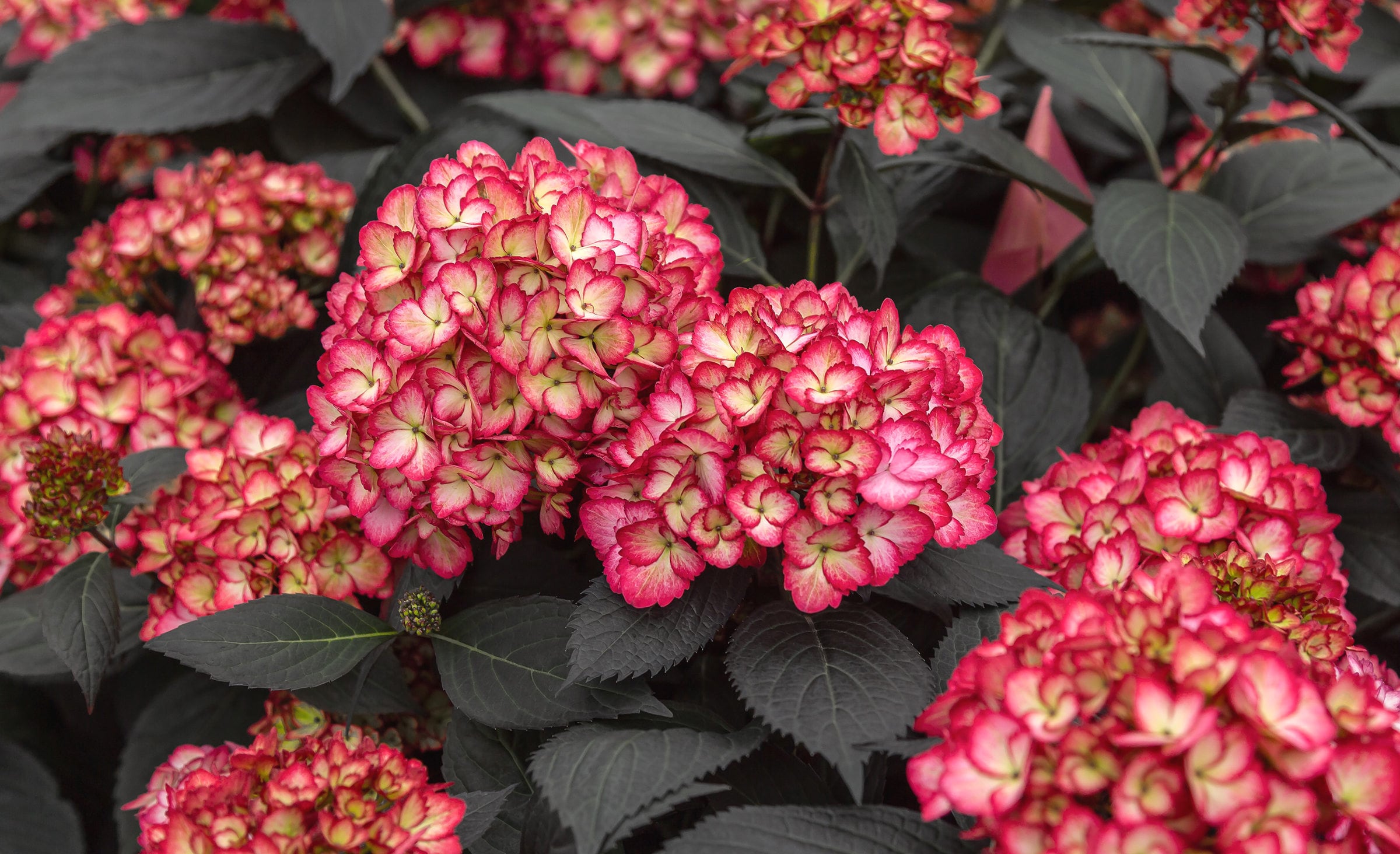This week’s Plant Pick of the Week from PennLive garden writer George Weigel is as follows:
* Hydrangea Eclipse is the common name.
* Hydrangea macrophylla is its botanical name.
* What it is: Dark foliage is popular right now, and this hydrangea, which was introduced in 2024, has some of the darkest foliage of any shrub—almost black. Eclipse’s creator, Bailey Nurseries, notes that, in contrast to certain dark-leafed plants, this one maintains its black hue all season long, even in hot climates.
It reads like a red bicolor. Eclipse produces big, spherical, mophead flowers in late June to early July that are primarily cranberry-red with creamy centers. In contrast to the dark foliage, the color is stunning.
Additionally, plants are resistant to leaf diseases.
At the 2023 American Hort Cultivate expo, Eclipse attracted enough attention to get a Retailers Choice award for being a new plant that might become a garden center best-seller. Additionally, it was named the best new shrub of 2024 by the National Garden Bureau Professional Choice Green Thumb Award.
* Dimensions: Eclipse’s height and width are approximately five feet.
* Where to use: Eclipse thrives in locations with early sunlight and afternoon shade, just like the majority of bigleaf hydrangea cultivars. The ideal foundation is on the east. Dappled sunshine behind trees is the same.
Large pots can also be used to cultivate eclipse plants. Simply keep them continually moist. To assist potted plants survive the winter, remove them and plant them in the fall or place the pots near a hot wall and cover them with leaves.
* Maintenance: In dry conditions, give it a deep watering once or twice a week. Flower production is aided by an annual spring spreading of organic granular flower fertilizer.
If you wish to maintain a compact size or if the plants are becoming too dense, prune immediately after the flowers fade. Once you can see what has survived the winter, you can trim off any dead wood or dead tips in the early spring. Pruning living stems in the spring will chop off flower buds, so avoid doing so.
* Excellent companion:Any coralbells with gold or chartreuse leaves, such as golden creeping sedum Angelina, look good against Eclipse’s black foliage. In wooded areas, ferns, sedges, golden Japanese forest grass, and gold-variegated liriope make excellent textural companions. Additionally, gold-foliage shrubs like sumac Tiger Eyes, golden Hinoki falsecypress, elderberry Lemony Lace, gold-variegated boxwood, and box honeysuckle Baggesen’s Gold make excellent backdrops or partners.
-
See the archives of hundreds of past plant picks under George s Plant Profiles
Gardening with George Weigel
-
How to keep your yard from frying in the summer heat
-
How s your yard doing bee-wise?
-
Are your trees raining Cheetos dust ?
-
12 perennial flowers that can take the heat






